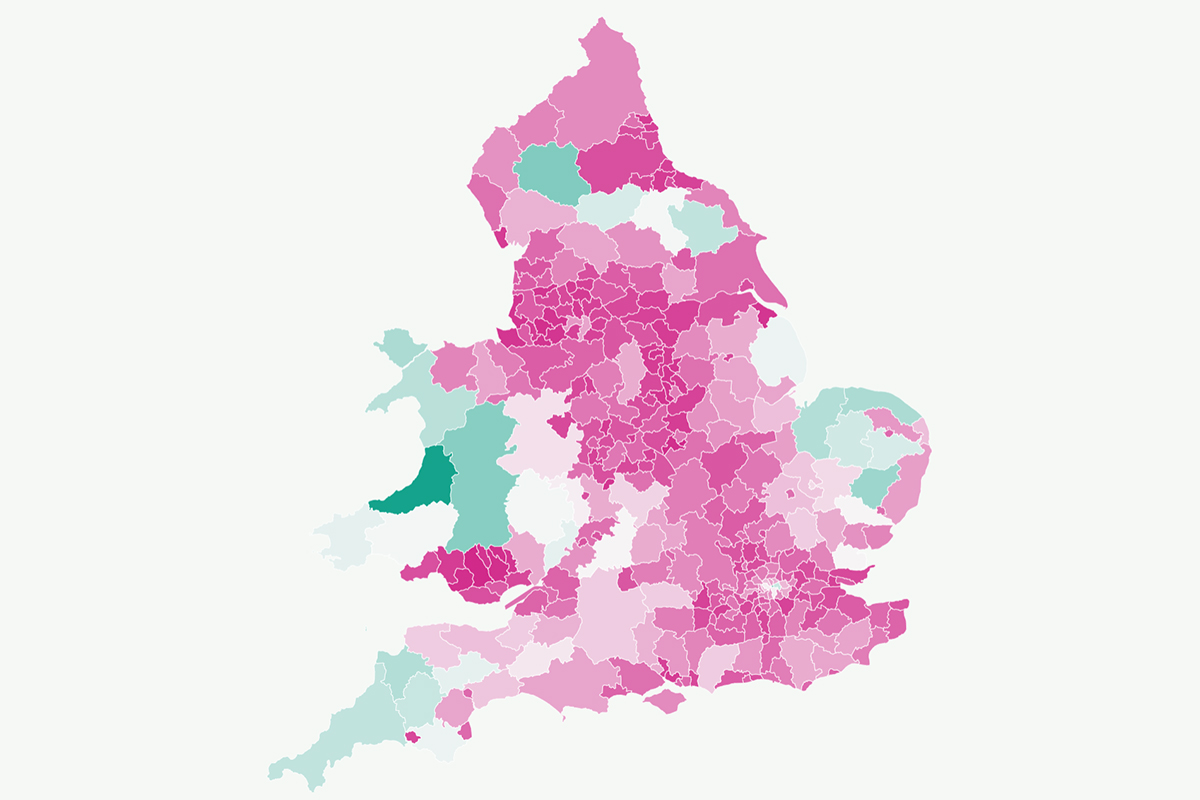
Nesta has highlighted in a new data analysis of the 2021 census that almost three-quarters of households in England and Wales (74%) reported that they use gas central heating as the only way to heat their homes, down from 78% in 2011.
To meet its target of net zero by 2050, the UK needs to replace roughly 25 million oil and gas boilers with low-carbon heating systems over the next three decades.
Although gas remains dominant in most of the country, the analysis of the census data finds that in some areas of England and Wales less than half of households are heated by mains gas. There are 18 local authorities where half or less than half of households reported that they were heated by mains gas only. These are mainly concentrated in central London and in rural areas such as East Anglia, Devon, Cornwall and West Wales. In London, only 27% of households in the City of London were heated by mains gas, for example, while it was 48% in Tower Hamlets.
Nesta’s analysis has also highlighted that there are still many households heated entirely by electricity, with around 9% of households reporting that they used electricity only, compared to 8% in 2011. In 2020, Government data covering England found that households that used electricity to heat their homes faced higher fuel costs than for all main fuel types. This is because direct electric heating typically uses a similar amount of energy to a gas or oil boiler, but electricity is much more expensive – around 3.3 times more expensive under the current price cap. With electricity prices in the UK jumping by 65.5% in the 12 months to November 2022, these households’ bills are set to skyrocket.
Andrew Sissons, deputy director of sustainable future at Nesta, said: “The census data shows that while there are pockets of innovation in green home heating, especially in some rural areas, there is still a long way to go. The vast majority of homes in England and Wales rely on fossil fuels for their heating. That’s bad for the climate and now bad for energy bills too. The census also suggests almost one in 10 homes are using direct electric heating, which is typically the most expensive way to heat a home and should raise significant concerns about fuel poverty.
“Green heating is poised for a take off in 2023, as concerns about the climate and energy bills grow, and as crucial options such as heat pumps and communal heat networks move into the mass market. It is primarily rural areas – such as Cornwall, East Anglia, West Wales and the Scottish Highlands and Islands – that are leading the way on heat pumps. Nesta analysis has shown that a well-installed heat pump is now cheaper to run than a gas boiler, and there is scope for much bigger cost savings as the UK increases its supply of cheap, renewable electricity.
“Green heating has taken off in the last two years in many parts of Europe and America, but the UK is still lagging behind, now sitting bottom of the European heat pump league table. To catch up and turn the map green, the Government should focus on making electricity cheaper, on building a skilled workforce for green heating and on providing more financial support to homeowners with the costs of switching, particularly those on lower incomes.”













